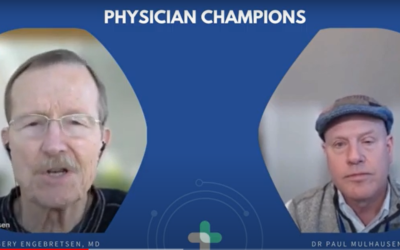Blood Pressure in Diabetes
Your body uses sugar for many different reasons, but one of the major uses is to make energy. If you have high blood sugar in the blood, your body cannot use it the right way, which may cause you to develop other medical conditions, such as heart disease, kidney disease, and many others.
Hypertension (High Blood Pressure)
A large majority of people with diabetes also have a condition called hypertension, or high blood pressure. This is very common for people with type 2 diabetes, but it can also develop in people with type 1 diabetes.
- High blood pressure, like diabetes, has the potential to cause the development of other health conditions —some of which will be the same between both conditions.
- This is why your doctor will check to see if your blood pressure is well controlled, especially if you also have diabetes.
- A well-controlled blood pressure is one that is equal to or lower than the number recommended by guidelines your doctor follows. For most people, you can expect the goal for the top number to be less than 130-140, and for the bottom number to be less than 80-90.
- At each checkup, your doctor will take your blood pressure and discuss which “number” is best for you.
Medications
If you have both diabetes and high blood pressure, it is not uncommon for your doctor to start you on a medication that will help to protect your kidneys. We said earlier that diabetes and high blood pressure can cause other medical conditions to develop —kidney disease is a condition that can be caused by either one.
- There are medications, known as an “ACE-inhibitors” or “ARBs,” that are used primarily to lower blood pressure, but have the added benefit of protecting your kidneys from potential damage.
- In addition to these two types of high blood pressure medications, there are other blood pressure medications that can be used to treat high blood pressure, including medications like furosemide, hydrochlorothiazide, and amlodipine besylate. The ultimate goal is to lower blood pressure in whatever way is most appropriate for you.
- In some cases, you may have to take more than one type of high blood pressure medication to obtain good control. This will be a discussion you have with your doctor at the time of prescribing.
Besides taking medication, there are other ways to lower blood pressure and high blood sugar. Some things you can do include:
Eat Better
Less salt, more fresh foods! Try to cut back the amount of salt you eat while also trying to increase the amount of fresh fruits and vegetables, whole grains, and fiber in your diet.
Drink more water
For the average person, the recommended amount of water per day is about 8 full glasses. A full glass is considered to be 8 ounces of fluid. Try keeping a glass of water around throughout the day as a reminder to drink.
Exercise regularly
Get up and stay active! The American Heart Association (AHA) recommends 30 minutes per day of “aerobic” activity about 5 times per week (e.g., walking, hiking, swimming, running).
Quit smoking
Smoking can be the culprit of many health-related issues, including increasing blood pressure. Reducing the number of cigarettes you smoke or quitting all together will always have a positive effect on your health. If you feel you are ready to quit smoking, consult your pharmacist —they can discuss the available options with you.
Limit alcohol
Like smoking, alcohol can lead to many health-related problems, one of which is high blood pressure. It is recommended to limit intake to two drinks per day for men and one drink per day for women. One drink is considered to be 12 ounces of beer, 5 ounces of wine, or 1.5 ounces of hard liquor (e.g., vodka).
The examples listed above are just a few of the lifestyle changes that may contribute to lowering blood pressure and blood sugar, if done safely. Always consult your primary care provider before making any changes to your current diet and exercise routine to make sure it is appropriate and safe for you to do.
Recent Posts
Stay Active This Summer: Free Activities and Workouts for Everyone
Discover exciting and free ways to stay active this summer! From bike trails and state parks to low-impact workouts and more, our comprehensive list has something for everyone. Read on to explore all the fun activities and get moving today!
VIDEO: Arthritis-Appropriate, Evidence-Based Interventions
Watch Dr. Bery Engebretsen and Dr. Paul Mulhausen discuss arthritis interventions. Physical activiy and self-management education programs designed to help increase physical activity safety and comfortably, or to teach individuals how to cope with arthritis-related...
Heart Health Month
February is Heart Health Month! Nutrition is a good place to start when considering changes to improve the health of your heart. Below are ten tips, from our friends at the American Heart Association, to begin your journey to a healthier heart. A word of advice from...
Cervical Cancer Awareness Month
January is Cervical Health Awareness MonthAnyone with a cervix is at risk for cervical cancer. It occurs most often in people over age 30. Long-lasting infection with certain types of human papillomavirus (HPV) is the main cause of cervical cancer. HPV is a common...
Seniors on Medicare: Let’s Chat!
Did you know Medicare patients are eligible to receive an annual wellness exam for free? It’s not a physical exam, but a 30 to 60 minute phone call or virtual meeting to discuss your health goals and ensure you are receiving the care you need. You’ll chat with PHC’s...
Tips for Getting a Mammogram
Did you know breast cancer is the most commonly diagnosed cancer among U.S. women? According to breastcancer.org, about 30% of all newly diagnosed cancers in women each year are breast cancer. With October being Breast Cancer Awareness Month, PHC is striving to raise...



